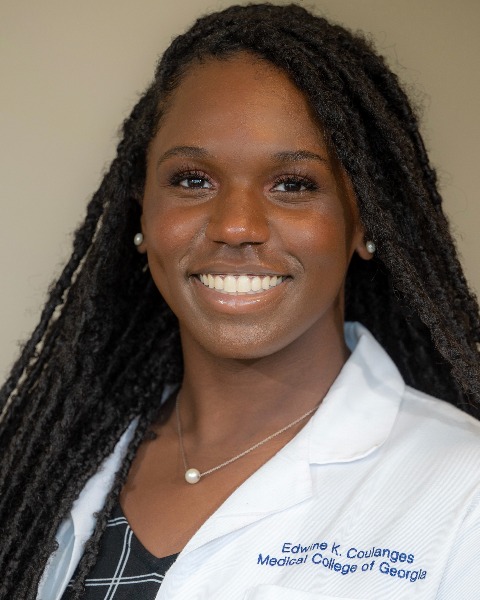Poster Presentation
Technology and Communications
Thursday Evening Poster Reception
THURS-098 - What’s DermTok Saying About Hair and Scalp Disorders?: A Cross-Sectional Study
Thursday, April 17, 2025
5:30 PM - 6:30 PM PST
Location: Pacific I/II, 2nd Floor
Area of Responsibility: Area I: Assessment of Needs and Capacity
Subcompetencies: 1.3.2 Determine the knowledge, attitudes, beliefs, skills, and behaviors that impact the health and health literacy of the priority population(s)., 6.2.1 Describe the intended outcome of the communication (e.g., raise awareness, advocacy, behavioral change, and risk communication).
Subcompetencies: 1.3.2 Determine the knowledge, attitudes, beliefs, skills, and behaviors that impact the health and health literacy of the priority population(s)., 6.2.1 Describe the intended outcome of the communication (e.g., raise awareness, advocacy, behavioral change, and risk communication).

Edwine K. Coulanges, MS (she/her/hers)
Medical Student
Medical College of Georgia
Augusta, Georgia, United States
Poster Presenter(s)
Learning Objectives:
At the end of this session, participants will be able to:
- Assess similarities and differences in the language used within TikTok content created by dermatologists and social media influencers.
- Evaluate viewer receptibility and engagement to dermatological content on TikTok and the utility of online education in understanding hair and scalp disorders.
- Upon completion, participant will be able to better understand how using social media as an educational can impact patient understanding of their disease processes.
Detailed abstract description: More than 80% of Americans experience conditions of or related to the skin, only about 40% visit a dermatologist for annual skin checks due to financial constraints or appointment or provider inaccessibility. Over 75% of individuals engage in online health-seeking behavior because of its cost-effectiveness and preservation of anonymity, and short-form content renders itself a useful and easily digestible form of education. TikTok, a social media platform, is an emerging tool for disseminating dermatologic public health education. On TikTok, both board-certified dermatologists and non-medical providers (“influencers”) provide dermatological advice, but how the quality of advice compares between the two creator groups is unclear. We aim to assess similarities and differences in the language used within content, user receptibility and engagement, and the utility of online education in understanding hair and scalp disorders.
A cross-sectional analysis of 97 TikTok videos from 2023 was performed to evaluate the content quality of videos made by dermatologists and influencers regarding three common hair and scalp disorders: seborrheic dermatitis, telogen effluvium, and traction alopecia. To simulate user experiences—assuming no prior knowledge of dermatological conditions—each condition was searched from the perspective of a TikTok user using symptom descriptors, excluding the condition name itself. Two-tailed t-tests were used to analyze user engagement and chi-square analyses were used to analyze video quality and user response.
Dermatologists and influencers had similar user engagement, but 49% of dermatologists were more likely to recommend standard treatments compared to 27% of influencers. 46% of influencers were more likely to recommend alternative treatment options compared to 25% of dermatologists. When analyzing user comments to assess audience understanding and concordance between patients and providers on current practices related to the three disorders, the disorders were often confused with at least 2-3 other similar hair and scalp conditions.
Board-certified dermatologists and influencers are both at the forefront of dermatological education on TikTok, yet there is a need to clarify to patients the standard of care for common hair and scalp disorders due to inconsistencies across dermatological videos. This study also identified a universal lack of messaging encouraging users to seek in-person medical attention for their dermatological concerns.
